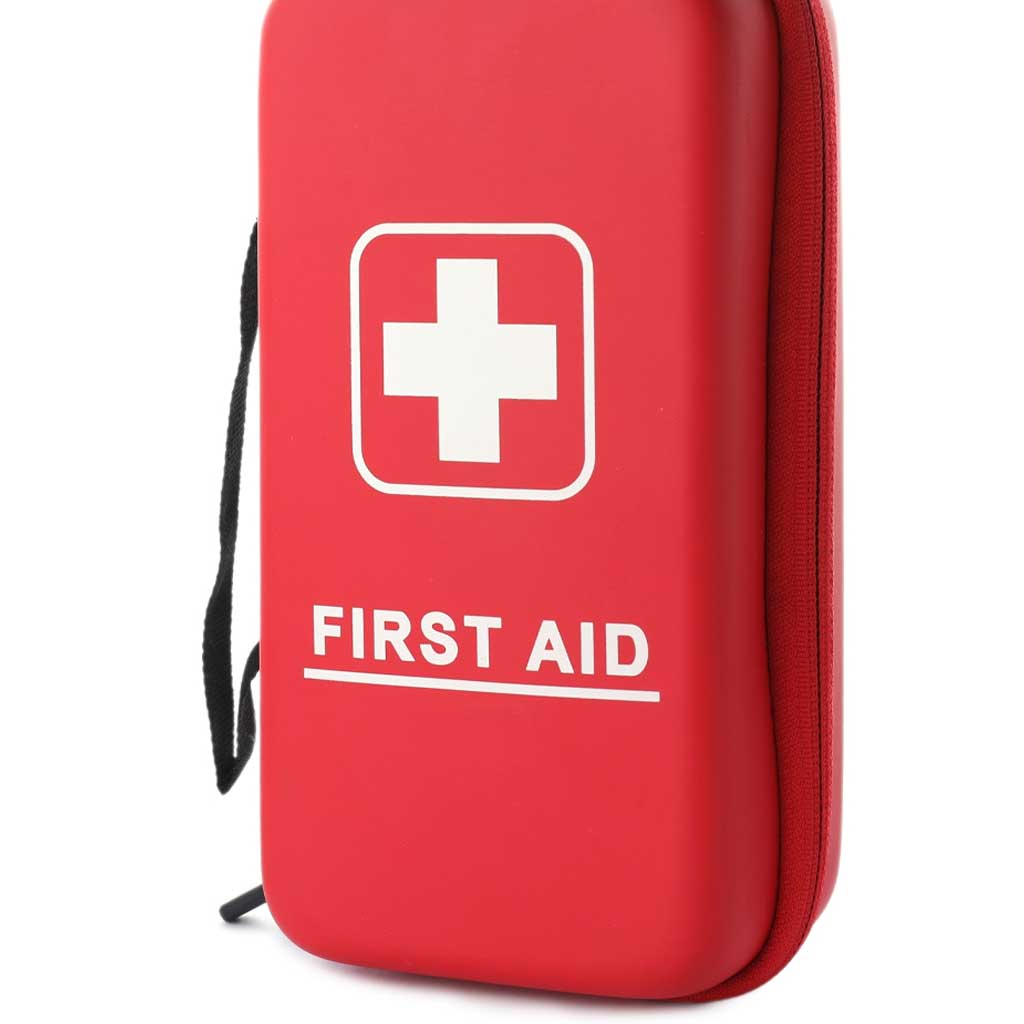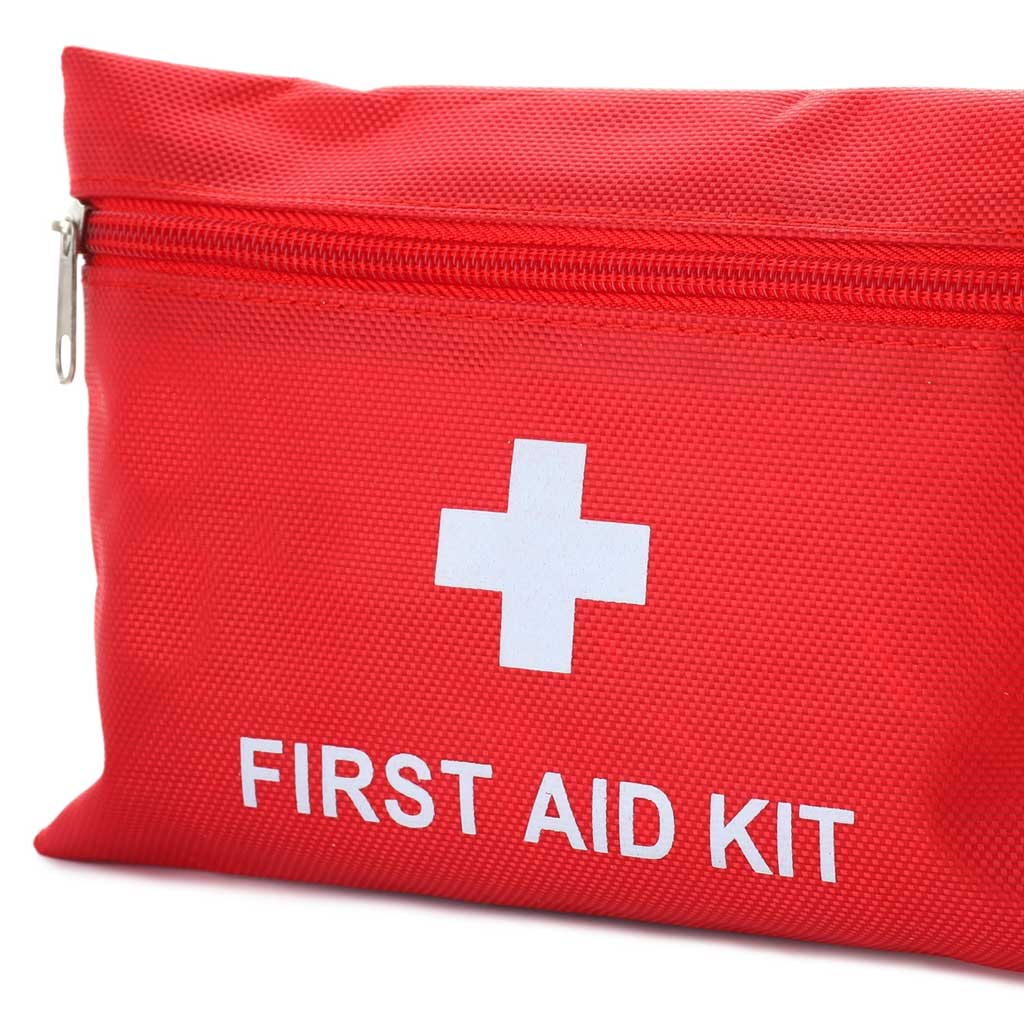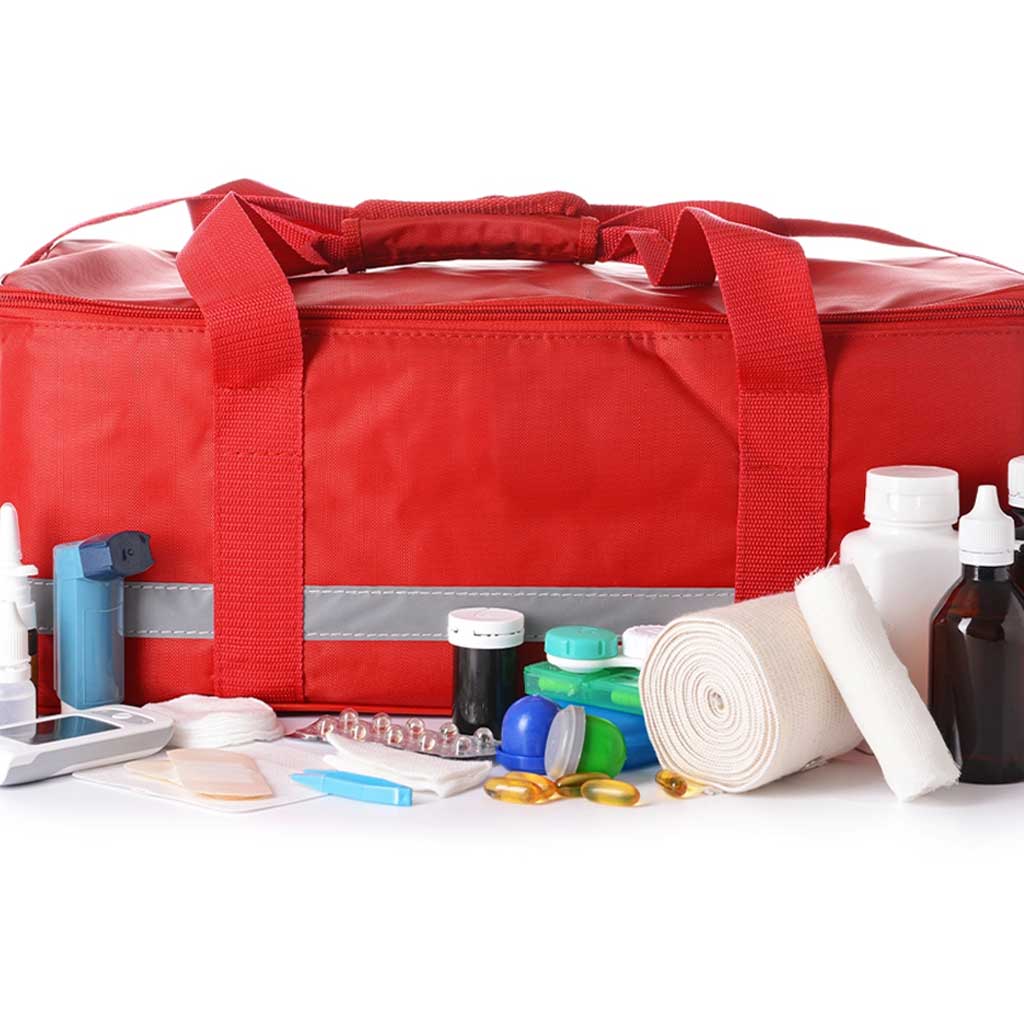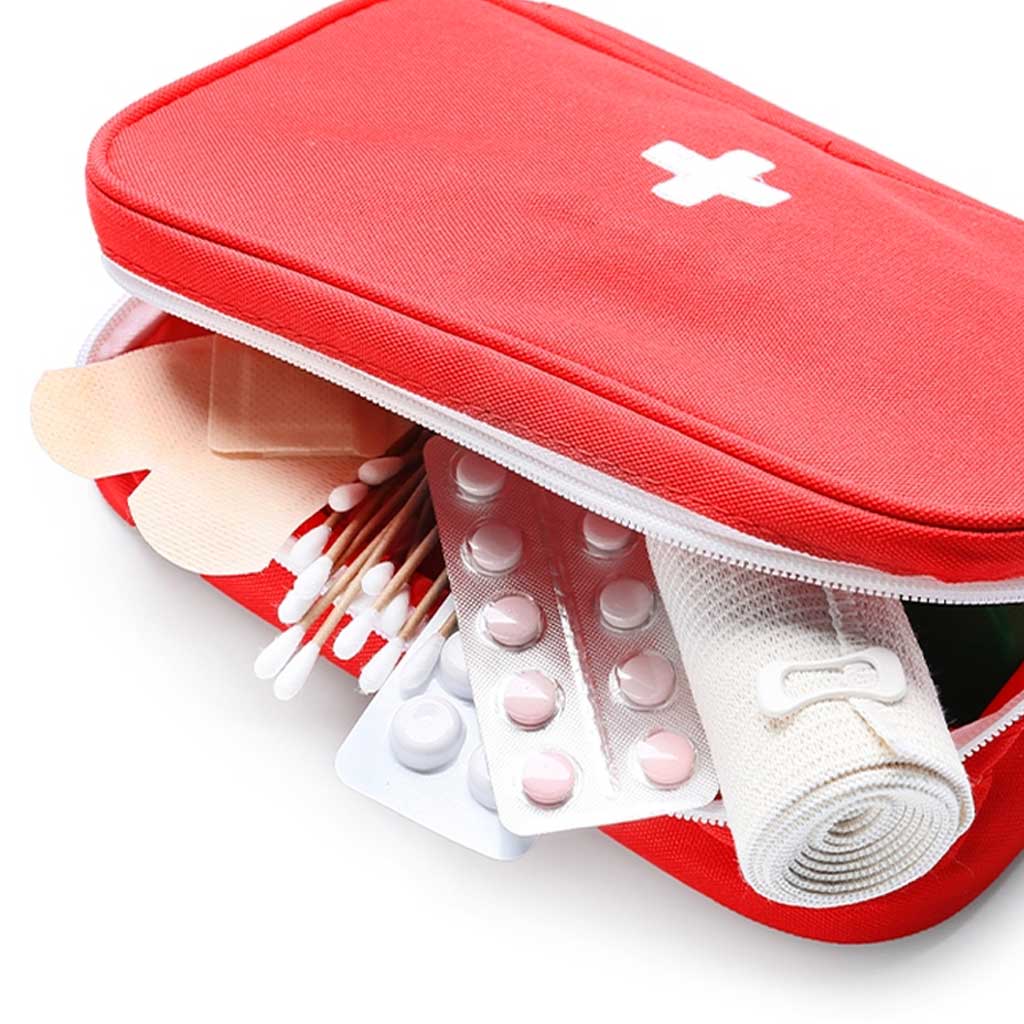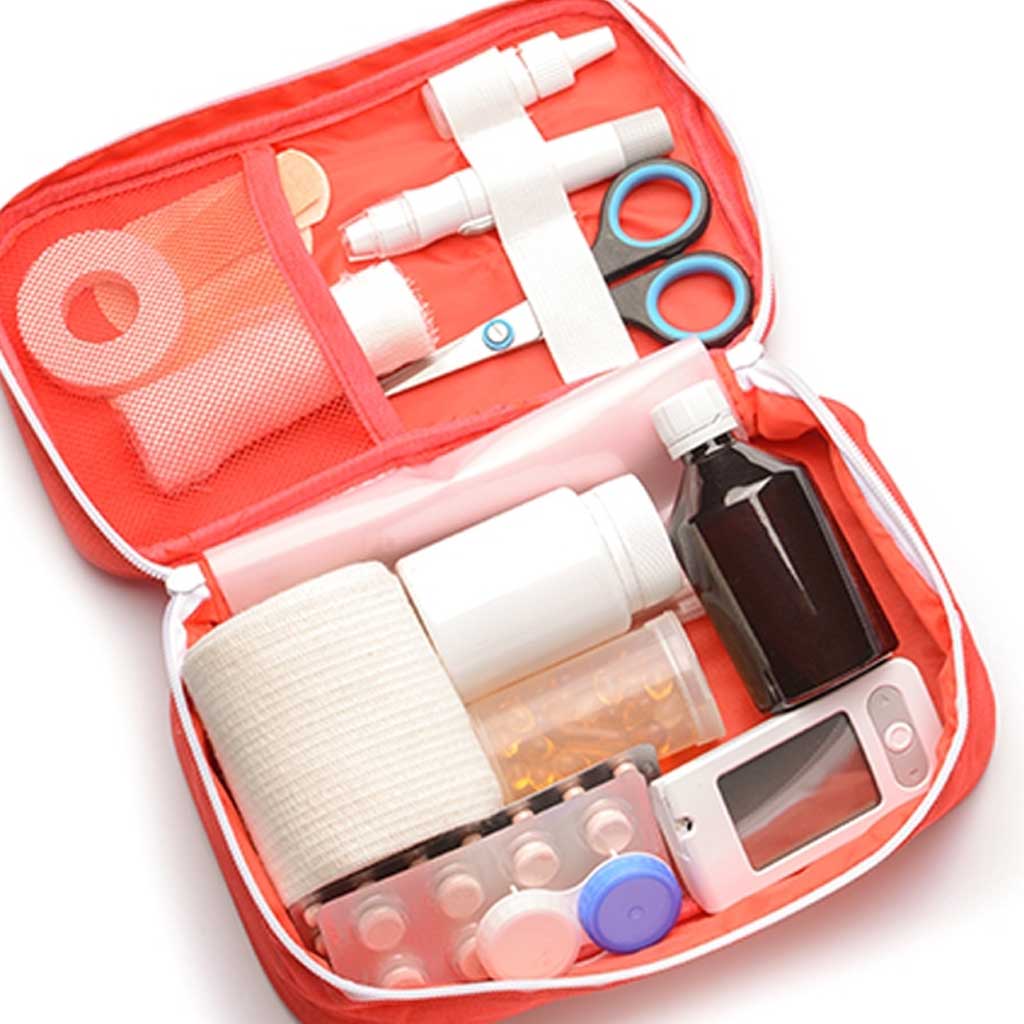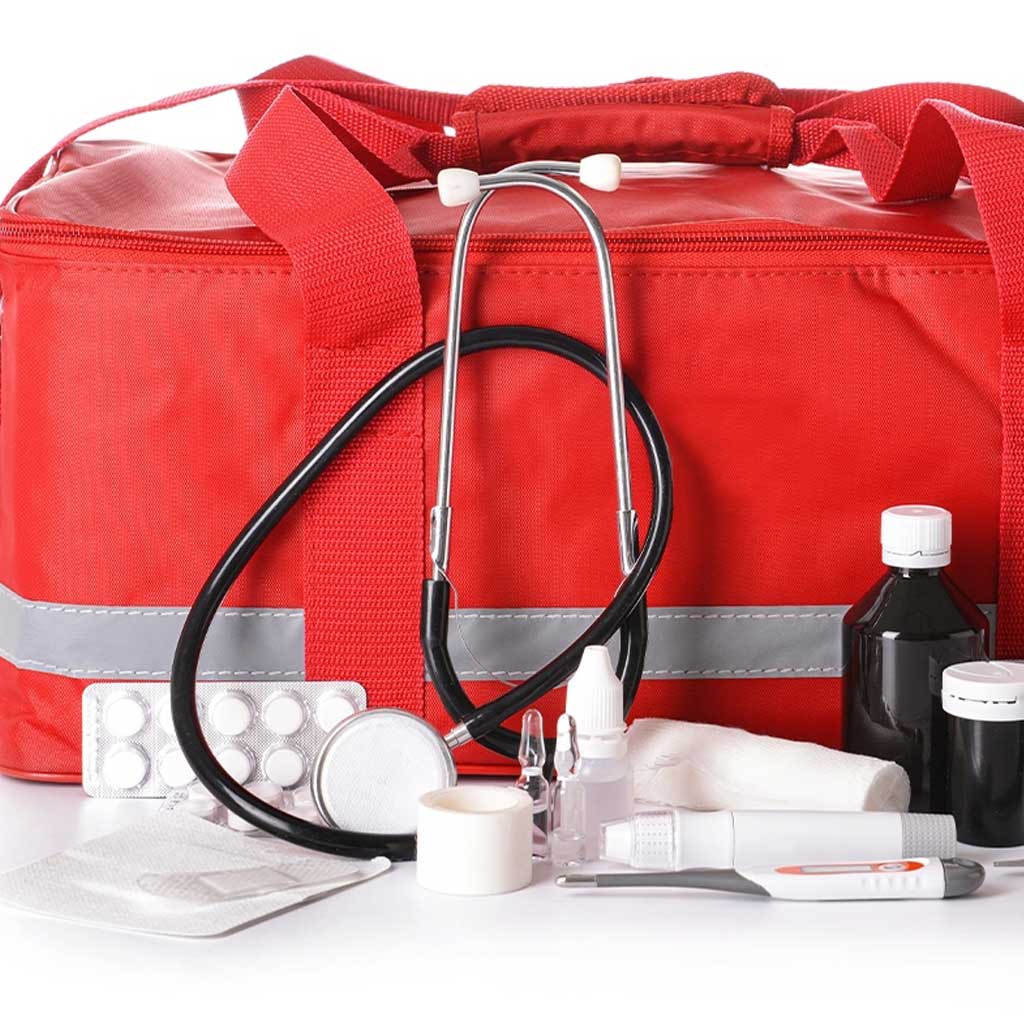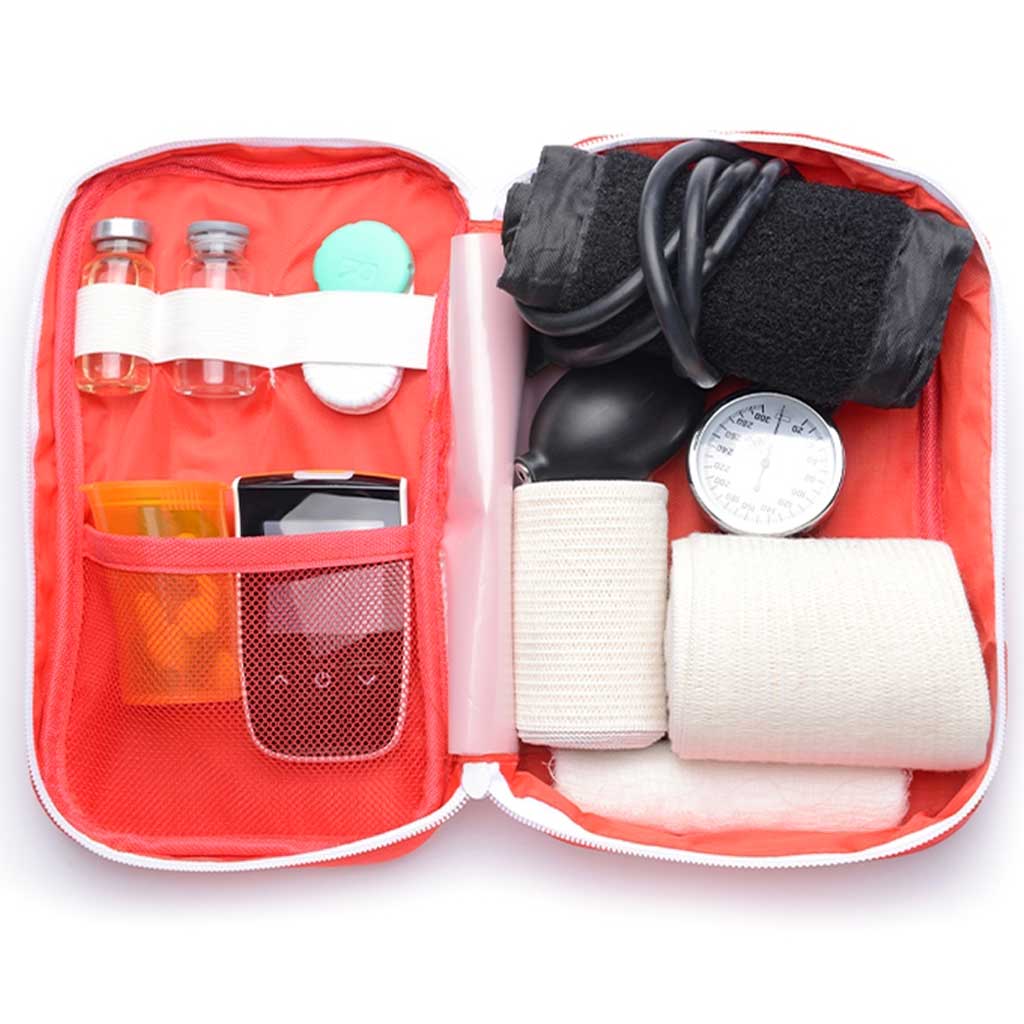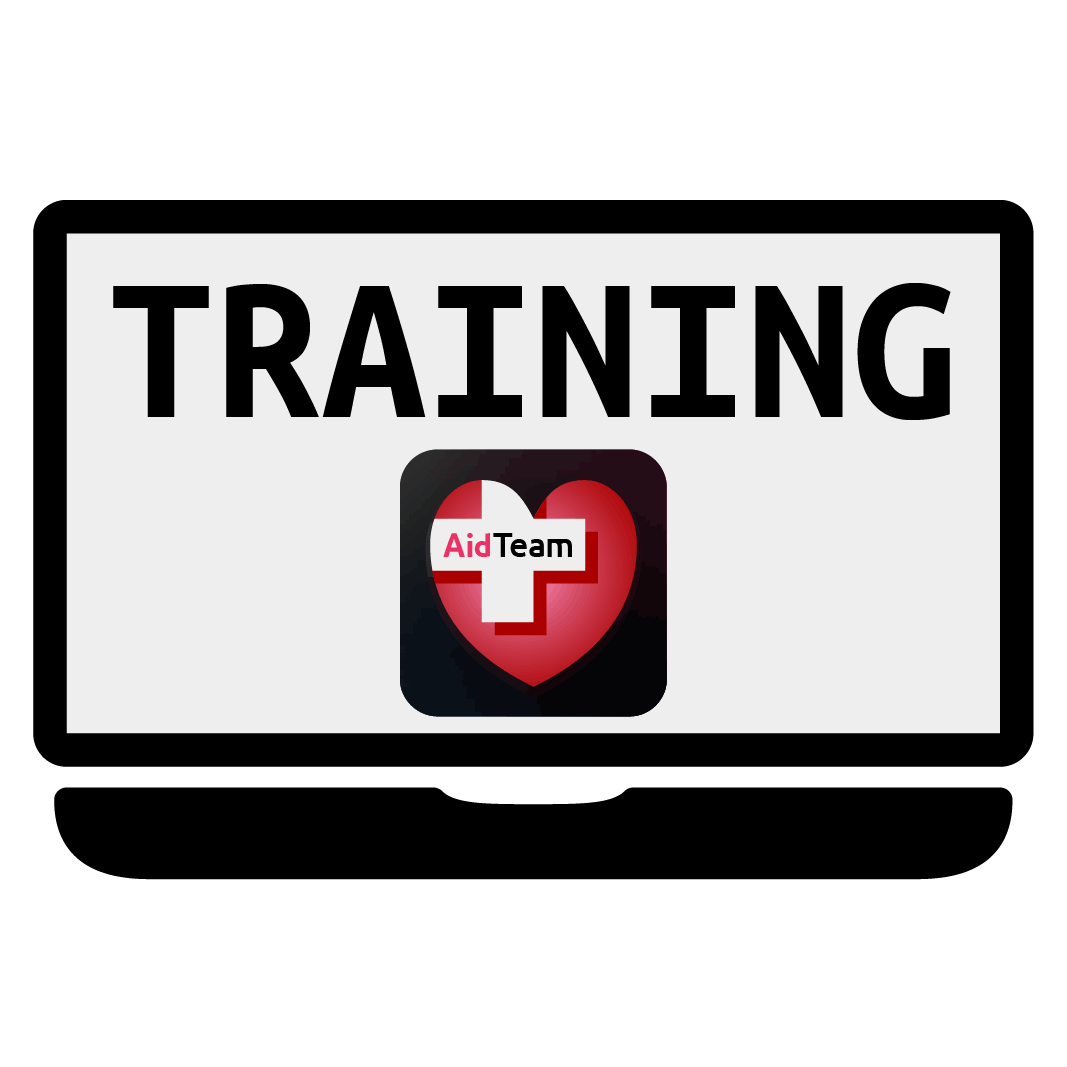Got Questions about Building a First Aid Kit?
A first aid kit contains supplies to treat an unexpected injury or medical event. It’s important to have one close by so that you can prevent minor injuries from getting worse and prevent more serious injuries from becoming life threatening.
What Comes in a Common Kit?
First aid kits are sold in various sizes, from ones small enough to slide into your pocket to kits contained in a duffel bag. Some of them are intended to treat the most common injuries, while others are stocked to address specific issues, such as burns, life-threatening bleeding, severe allergic reactions, or frequently occurring workplace injuries.
Your home first aid kit might simply require an antiseptic, sterile scissors, bandages sized to cover small scrapes and lacerations, aspirin or acetaminophen to relieve minor aches and pains, and topical medications for treating insect bites or stings.
Most standard, store-bought first aid kits contain essential items common to all kits. Once you buy your kit, open it and familiarize yourself with the contents. Likely, you’ll find many of the items listed above.
Most standard, store-bought first aid kits contain essential items common to all kits. Once you buy your kit, open it and familiarize yourself with the contents. Likely, you’ll find many of the items listed above.
Don’t be afraid to unpack your store-bought kit, then repack the items you want to keep in it. The extra space you create makes room for items to treat specific medical issues. For example, if you or someone in your family is diabetic, you might want to add insulin or other diabetic medications, and supplies to treat hypo- or hyperglycemia.
Create and Customize Your Own Kit
Where Do I Buy One?
When it comes to customizing your kit, remember that you can buy additional items for it over time. Start with the essential, most commonly needed items and add specialized items when you can.
Here’s a list of basic first aid kit online suppliers:
Changing Your Kit
First Aid Kits can be customized for an activity or a particular medical issue. Once you have your first aid kit stocked with the basic items, you can customize it for a particular situation or patient profile.
At the Jobsite
A jobsite first aid kit may need to be larger to accommodate enough supplies to treat several people at once. Also, such kits may need to be OSHA (Occupational Safety and Health Administration) or ANSI (American National Standards Institute) compliant, meaning they must contain supplies to treat certain types of injuries or accidents. Some kits are specifically designed to treat burns or to treat injuries that commonly occur on a boat or a construction site.
In a Vehicle
Your car’s first aid kit might contain many of the same items as your home kit, with the addition of supplies for addressing situations away from home, including child and adult sports injuries, car accidents, or needing to shelter in your car during severe weather.
Summer in the Sun
GoodRx Health recommends preparing your kit for summer by adding aloe vera gel to soothe sunburns, bug spray to prevent insect bites and stings, lidocaine numbing spray or cream to relieve pain from scrapes, sunburns, and bug bites, and drinking water to treat dehydration.
Known Medical Issues
The Cleveland Clinic recommends customizing your kit with your or a family member’s known medical issues in mind. Consider these factors:
Medical History: Does someone have an anaphylactic allergy? Make sure your kit contains an extra EpiPen®. Include blood-clotting supplies and extra dosages of appropriate medications for family members with hemophilia.
Ages: If you have young children, stock your kit with plenty of supplies to treat scrapes and cuts. Include aspirin in your kit in case a senior relative or guest experiences a heart attack. Keep antiseizure medications in the kit for a family member who is prone to experiencing seizures.
Geography: Do you live in or plan to travel to a place where snakebites or stings from jellyfish or scorpions are possible? Stock your kit with appropriate supplies. Don’t forget about medications for seasonal allergens and topical medications for treating rashes caused by indigenous plants.
Also, consider customizing your kit based on your favorite activities, such as boating, camping, hiking, running, or skiing. What minor or major injuries might you need to treat when engaging in those pursuits?
Get Training
It’s essential to get proper training on how to use your first aid kit and disaster preparedness supplies most effectively and how to respond to critical medical emergencies, such as administering CPR or using an AED. Many companies offer this training to employees, so find out if your employer is one of them. Follow the link for more information about getting CPR Certified from AidTeam.
What is a Go Bag?
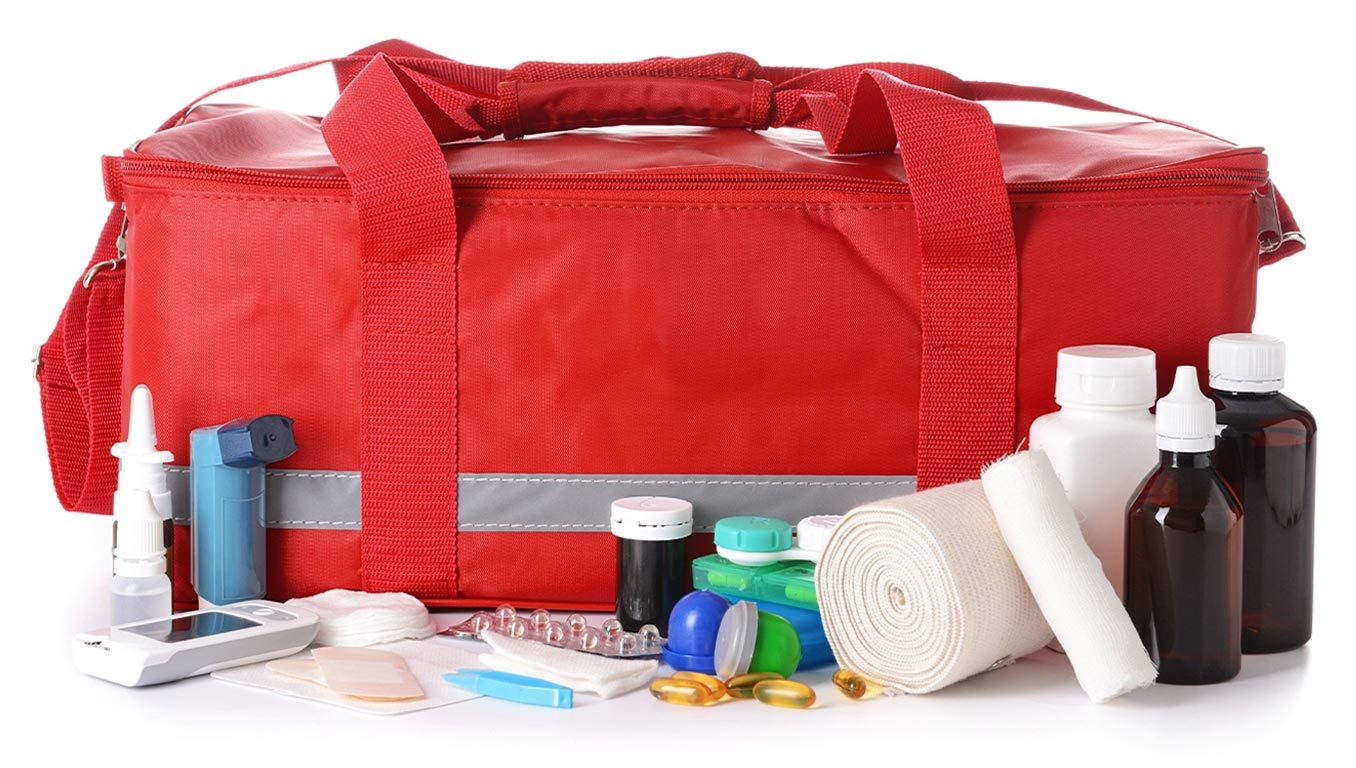
A go bag is usually designed to sustain an individual for up to 24 hours in the event evacuation is necessary, such as when threatened by a hurricane, fire, or flood. It’s small and frequently contained in a backpack for maximum portability. Many people store it in a closet or even in their vehicle.
Ideally, every member of your household (including pets) should have their own go bag with contents customized to their particular needs.
Wrapping it Up
You can purchase a standard first aid kit at a drugstore, grocery store, big box store, or from a variety of online sellers. Pay attention to the physical dimensions of the kit’s container, keeping in mind the supplies you may add to customize it to your particular needs.


